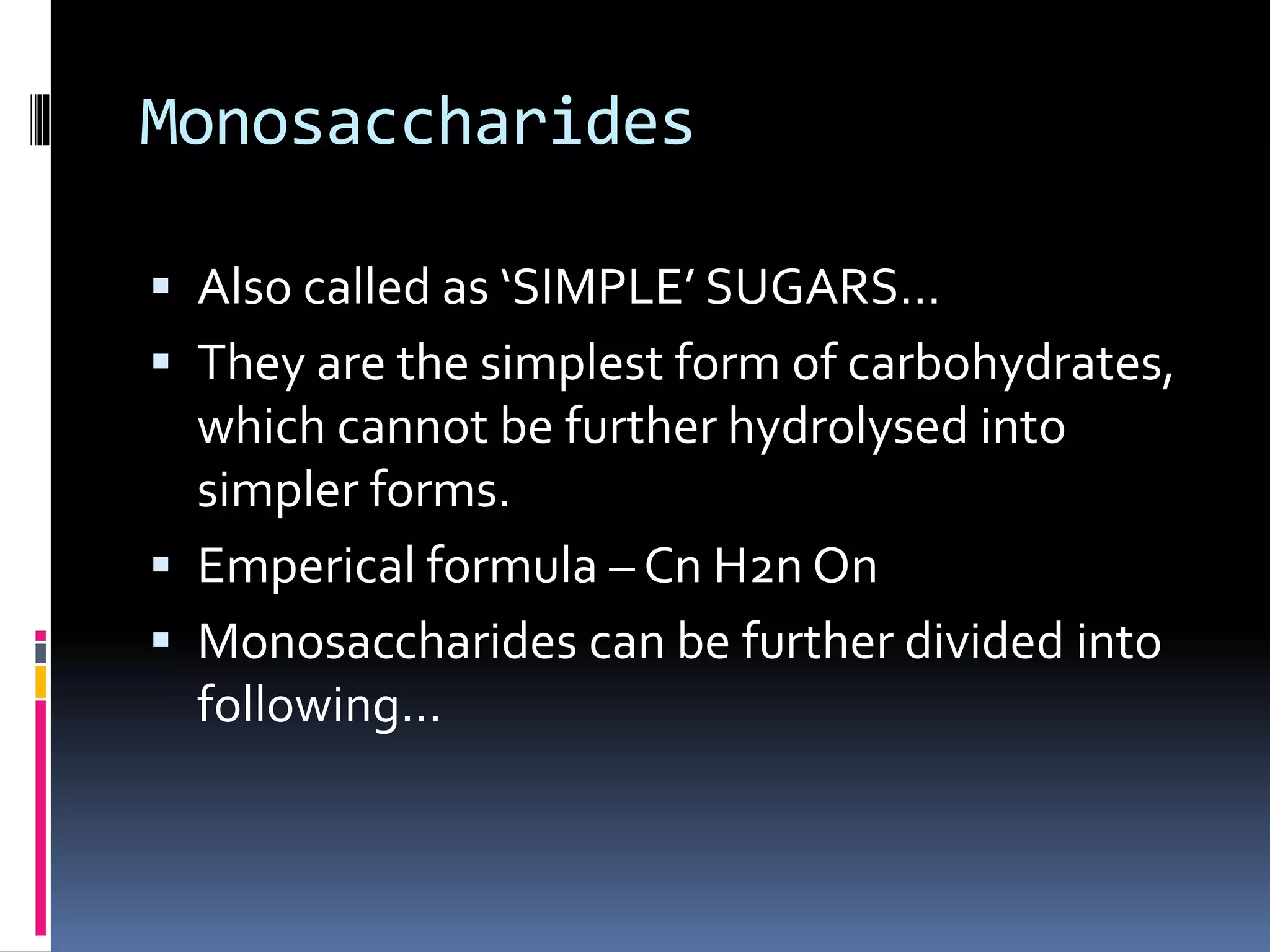1) Carbohydrates are composed of carbon, hydrogen, and oxygen. They can be classified into monosaccharides, disaccharides, oligosaccharides, and polysaccharides depending on their sugar unit composition.
2) Carbohydrates provide dietary energy and are important for energy storage. They also participate in cellular structure and function.
3) Glycolysis and the citric acid cycle are key pathways in carbohydrate metabolism that generate energy through the oxidation of glucose. Glycolysis yields pyruvate which feeds into the citric acid cycle in the mitochondria to fully oxidize glucose.













































